PROTECT YOUR DNA WITH QUANTUM TECHNOLOGY
Orgo-Life the new way to the future Advertising by AdpathwayDirect sowing your seeds has several benefits and a few drawbacks. When it comes to direct sowing flowers in July, the pros certainly outweigh the cons in this situation. Depending on your climate, there are many flowers that you should be able to start this way during the warm summer months.
It’s not for every seed, but for many, direct sowing helps plants to establish strong, deep roots. This means that they adapt more quickly to their environment, resulting in stronger, more drought-tolerant plants. Transplant stress and root disturbance can weaken the plant, leading to less success in the long term.
An obvious bonus is that direct sowing doesn’t require special equipment, such as seed trays and grow lights. While these are helpful for starting seeds over the winter, they’re not necessary in summer. Overall, direct sowing is an effective method for growing strong, resilient plants in a manner that more closely mimics their natural growth.
Native plants tend to be among the best suited for this method of growth. It also more accurately mimics the natural growth cycle. Let’s take a look at some beautiful flowering plants that you can direct sow this July.
Giant Purple Zinnia

Giant Purple Zinnia Seeds
Apricotta Cosmos

Lemon Queen Sunflower
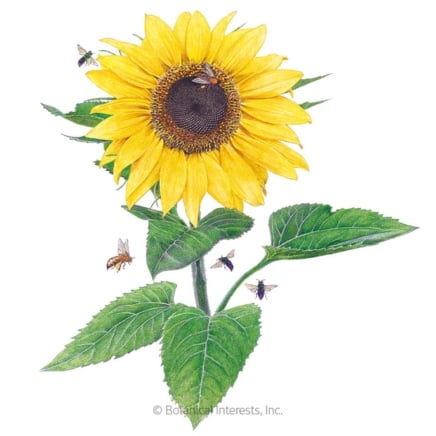
Lemon Queen Sunflower Seeds

Zinnia ‘Giant Purple’
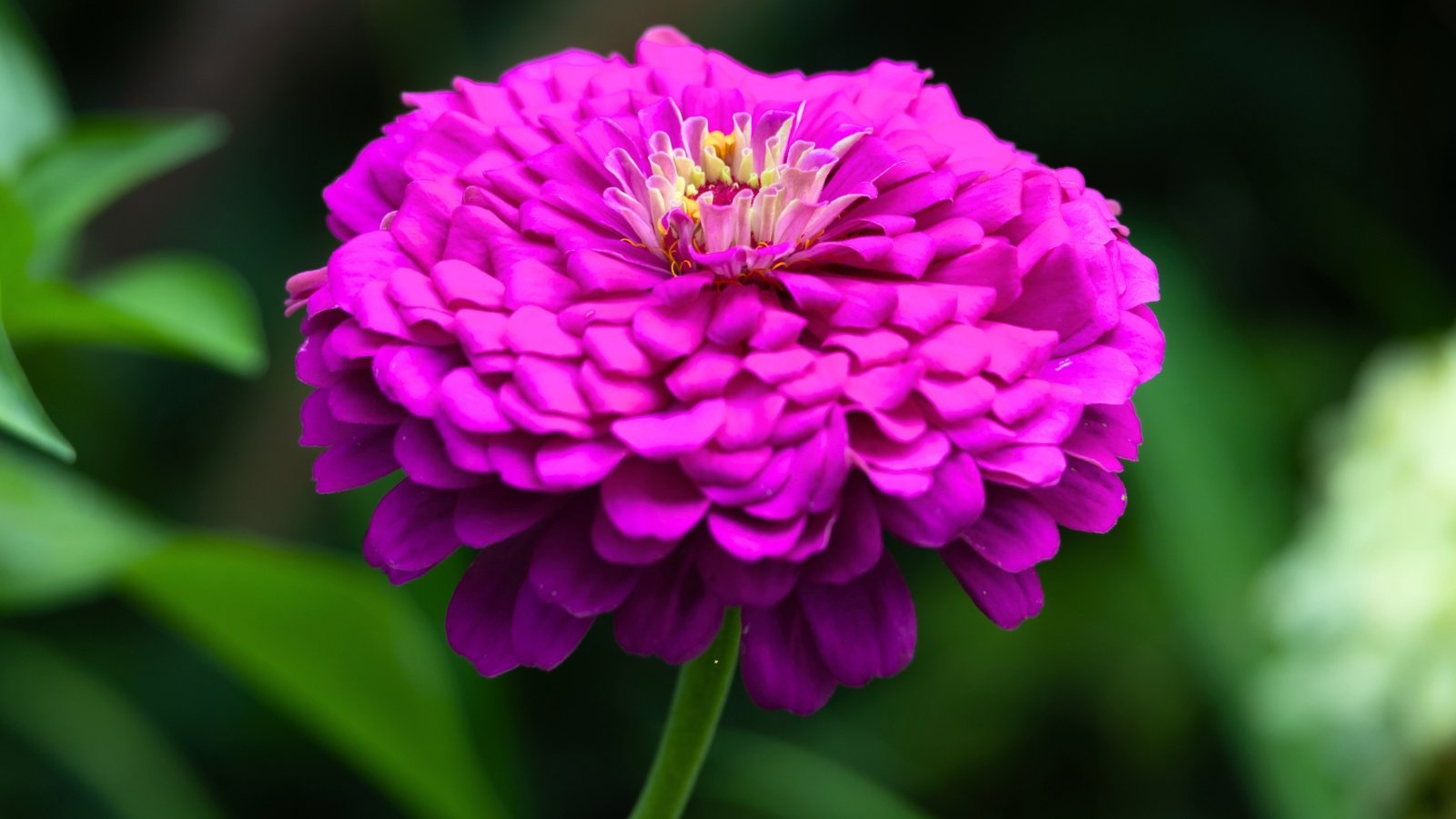 It loves sun and warmth, showing off big purple petals.
It loves sun and warmth, showing off big purple petals.Zinnias are great for direct sowing in July, as well as any of the warmer months. As long as the soil is 65°F (18°C) or higher, these are exceptionally easy to grow this way. Zinnia seeds are large and don’t need light to germinate. Speaking of germination, they do it quickly. Seeds sprout as early as four days under ideal conditions.
Zinnias are also fast to mature and bloom. As long as you have three months before your first anticipated frost date, you’ll be able to enjoy them. ‘Giant Purple’ is a large variety with four to five-inch purple flowers. It’s a classic heirloom style and loves a warm, sunny location.
Cosmos ‘Apricotta’
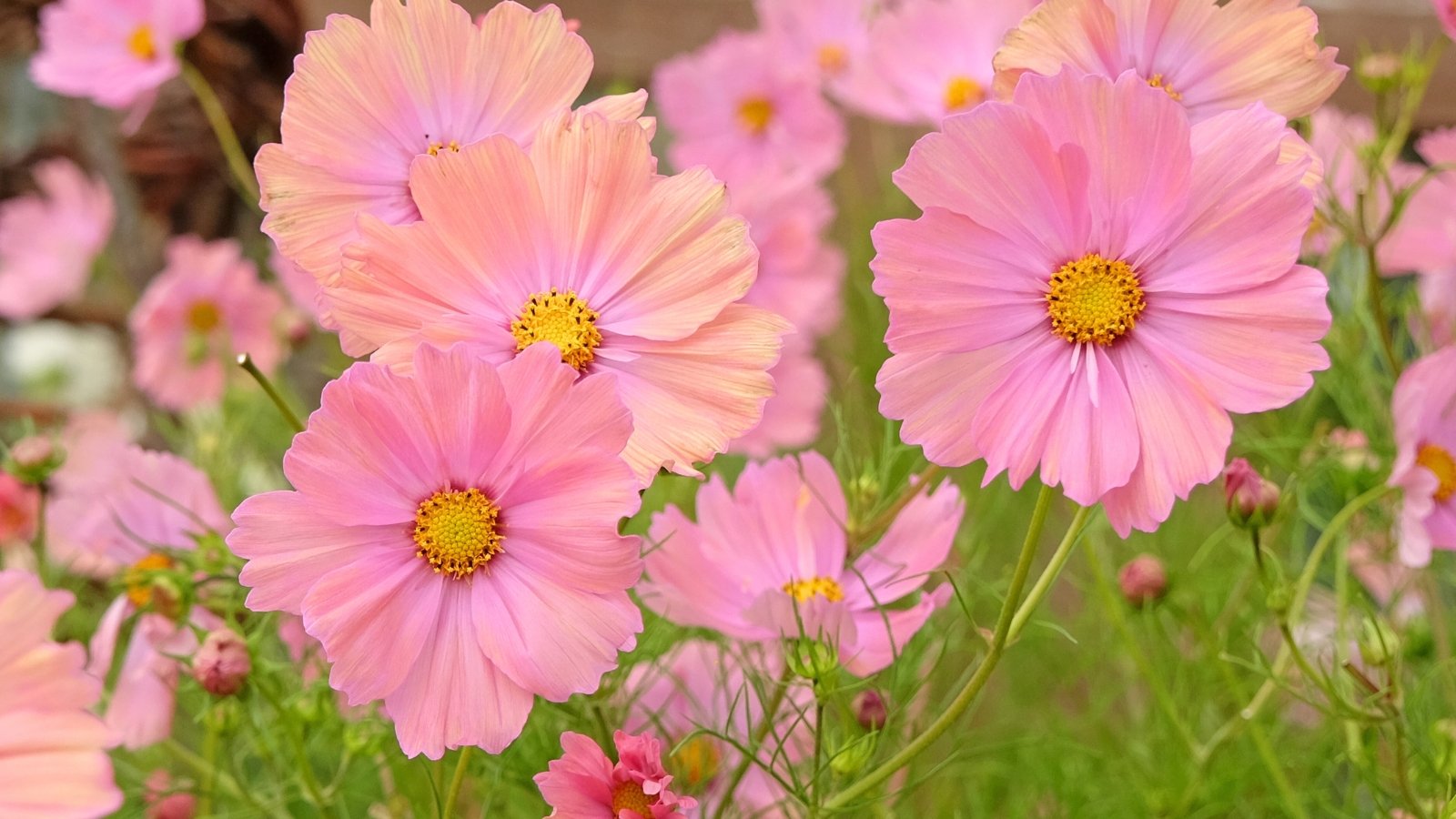 Blossoms open delicately with a warm yellow heart.
Blossoms open delicately with a warm yellow heart.Cosmos is another fast grower that takes well to direct sowing in July. It’s easy to do it, you can simply scatter the seeds and thin them out after they sprout. You can start direct sowing these as soon as the soil is above 60°F (16°C) and continue until late summer. They bloom in 75 days.
‘Apricotta’ is a romantic and airy variety with delicate peach-colored petals. A pink undertone and yellow center bring warmth and intensify as the flowers age. These prefer soil with lower nitrogen, as it can produce too much green growth and too few flowers.
Sunflower ‘Lemon Queen’
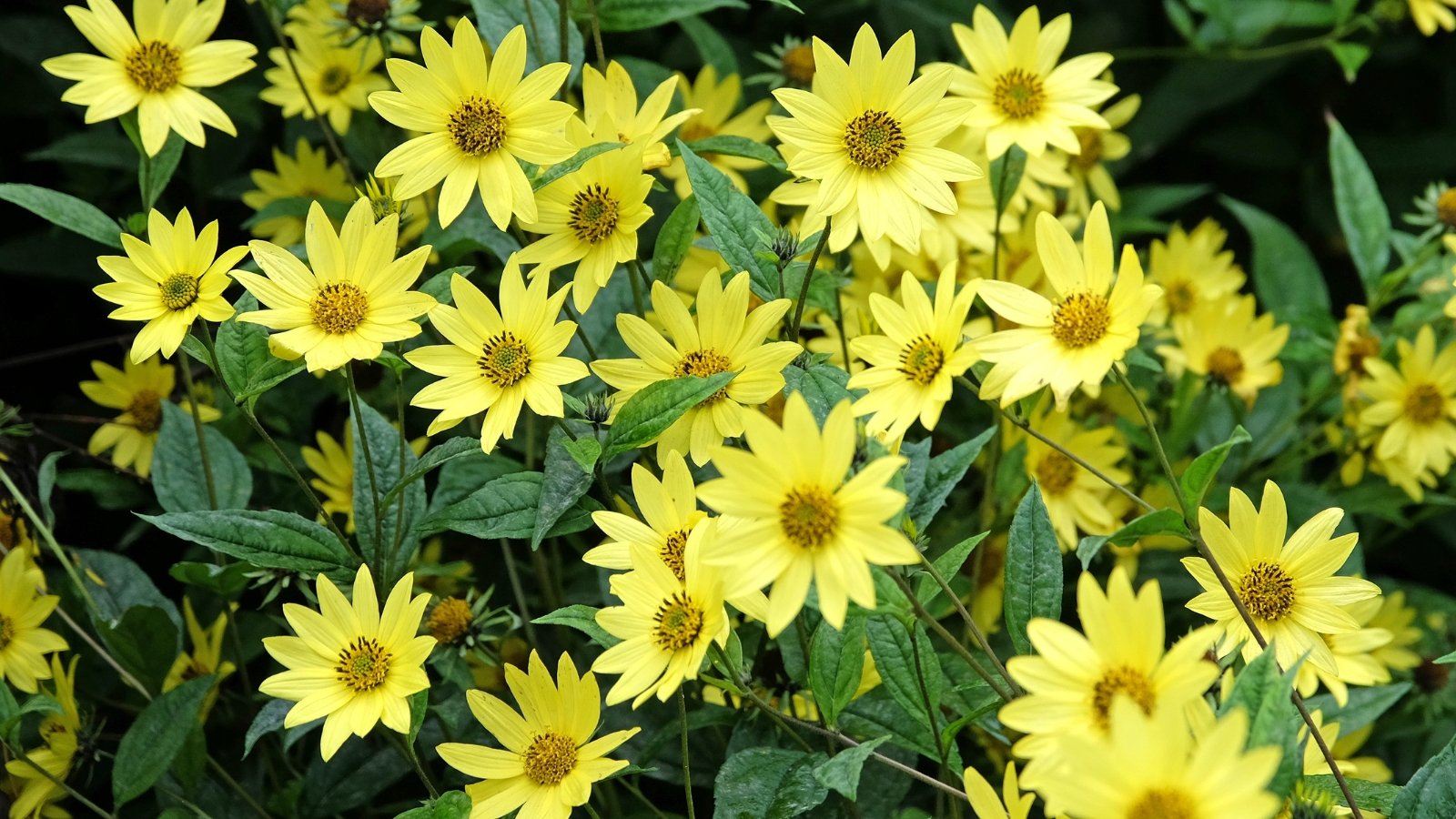 Towering stems hold pale lemon blooms all season long.
Towering stems hold pale lemon blooms all season long.I pop sunflower seeds in the ground all summer. For flowers that you can direct sow in July, sunflowers are ideal. They germinate quickly, and depending on the variety, they bloom in about two to three months. Plant these now for sunny blooms in early autumn.
‘Lemon Queen’ is one of my favorite varieties. The pale, lemon chiffon flowers have a nearly black center. They sit atop five to seven-foot stems, towering over your beds. As if that weren’t reason enough to select this cultivar, they are branching, so they continue to bloom for weeks!
Marigold ‘Naughty Marietta’
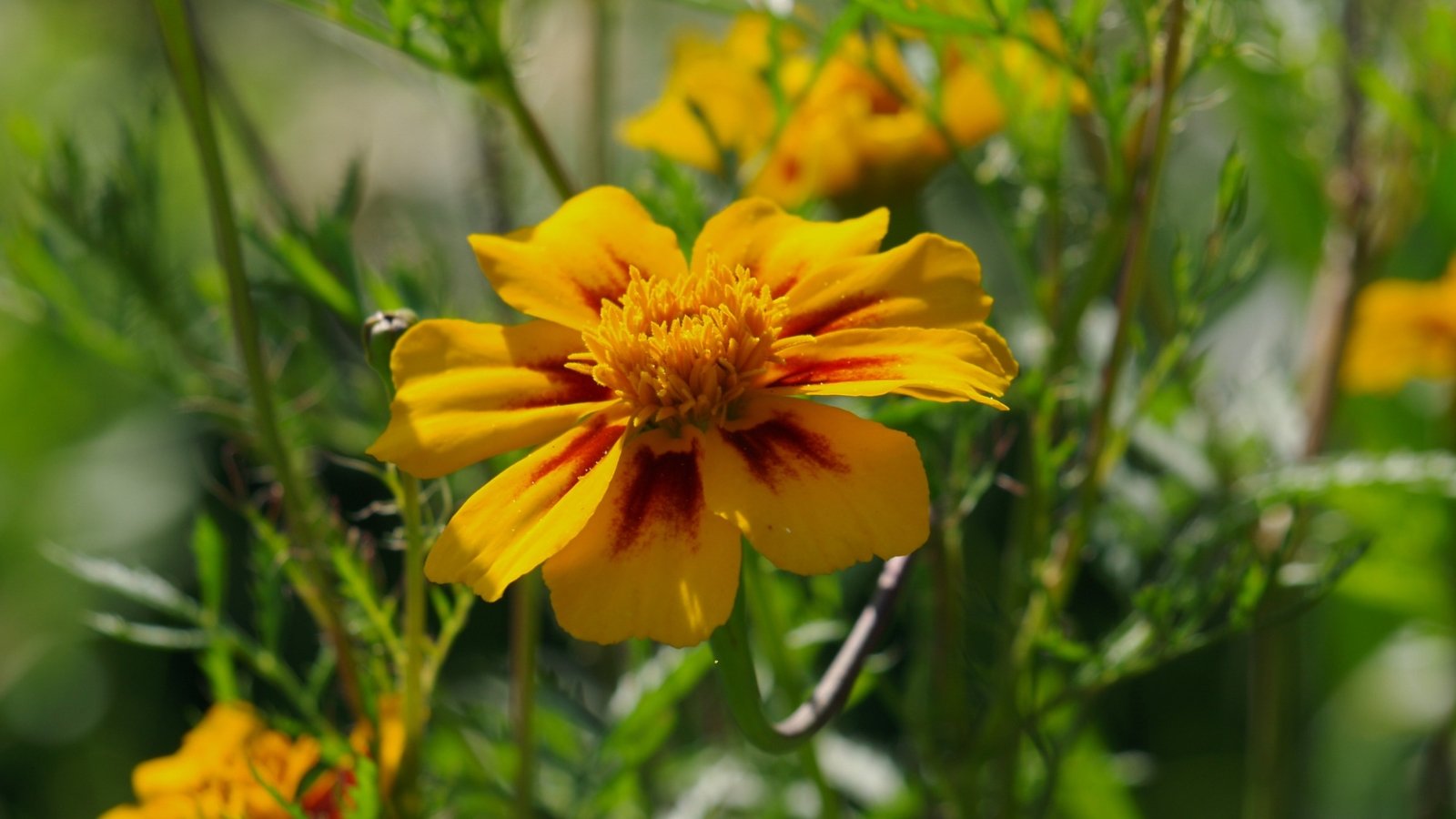 Little blooms pop up even when left to self-seed.
Little blooms pop up even when left to self-seed.Marigolds are a cinch to grow because they are unappealing to most pests and are fast growers. You may even see them self-seed if you leave flowers to go to seed. These prefer moderately fertile soil and moisture to germinate but are fairly drought-tolerant once established. You can direct sow these flowers in July and at almost any other time during the warmer months, however, they may have trouble germinating in hotter climates.
‘Naughty Marietta’ is a French marigold. These plants are small and shrubby, producing numerous small yellow flowers with a maroon center. Sow the seeds about 1/4″ deep and 6″-9″ apart. For larger African marigolds, spacing should be 12″-18″ apart.
Nasturtium ‘Black Velvet’
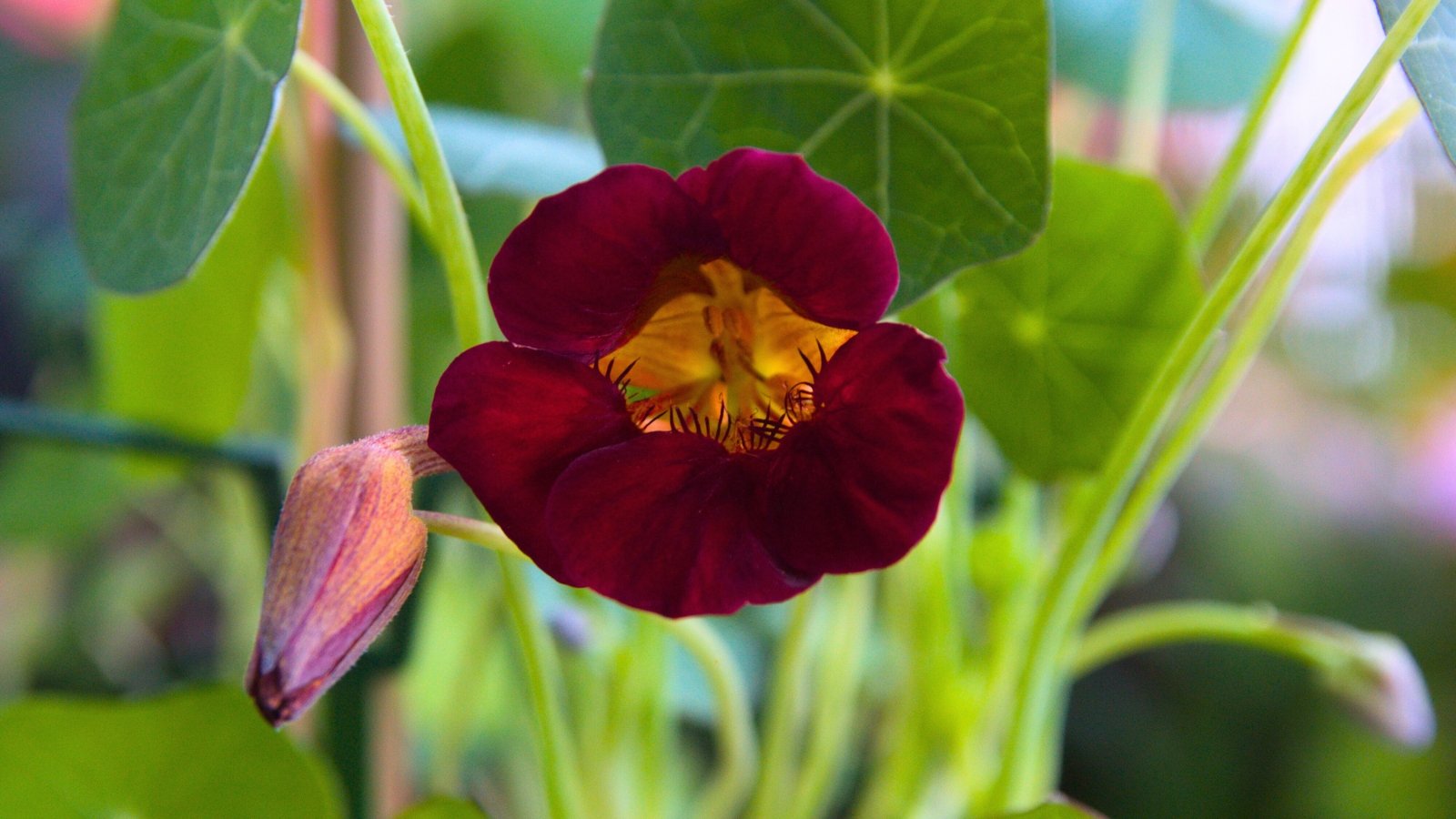 It prefers poor soil and still delivers stunning, spicy flowers.
It prefers poor soil and still delivers stunning, spicy flowers.Nasturtiums have large seeds and germinate quickly, making them ideal for direct sowing. While they typically prefer cooler temperatures, if you plant in partial shade in July, they should perform well (unless you live in a really hot climate). Soak your seeds prior to planting to expedite germination.
‘Black Velvet’ is a shrubby variety with deep maroon flowers against bright green foliage. All parts of the plant are edible and have a distinct, peppery flavor. They don’t mind poor soil; in fact, they prefer it, so don’t worry about amending it before you plant.
Calendula ‘Zeolights’
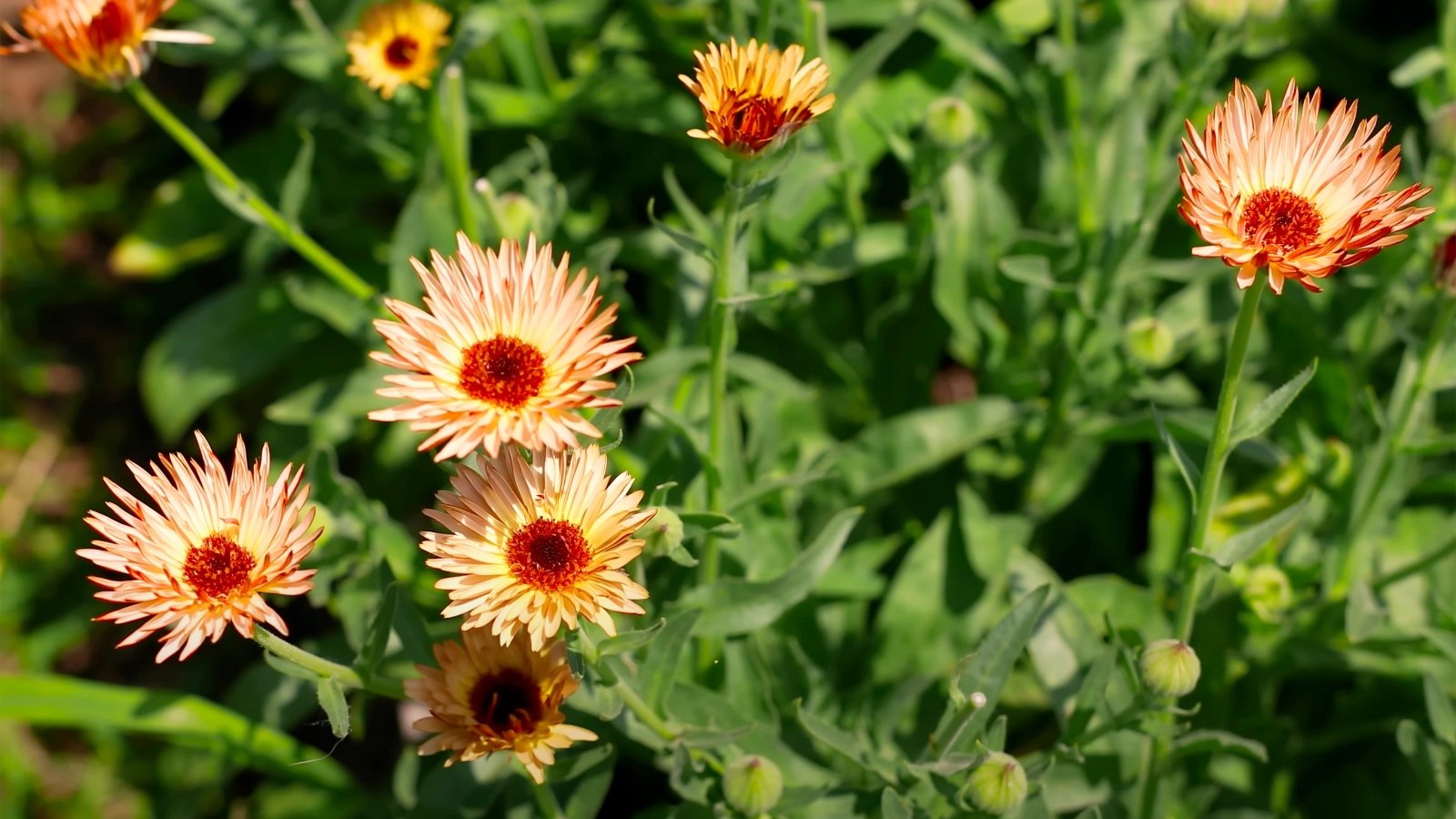 It offers a unique twist on classic blooms, brightening any garden space.
It offers a unique twist on classic blooms, brightening any garden space.In cool-climate areas, calendulas are great flowers to direct-sow in July. In warm climates, these are better suited for growing during spring and fall. Calendula seeds are great for planting right in the garden. They don’t require any special preparation, just plant them 1/4″ deep. They take five to ten days to germinate.
‘Zeolights’ is a unique and beautiful variety. Where calendula flowers are typically solid yellow or orange, these are bronze and pink. They have a dark center and a touch of yellow that gives a glow from within. They make great cut flowers and are edible as well.
Celosia ‘Flamingo’
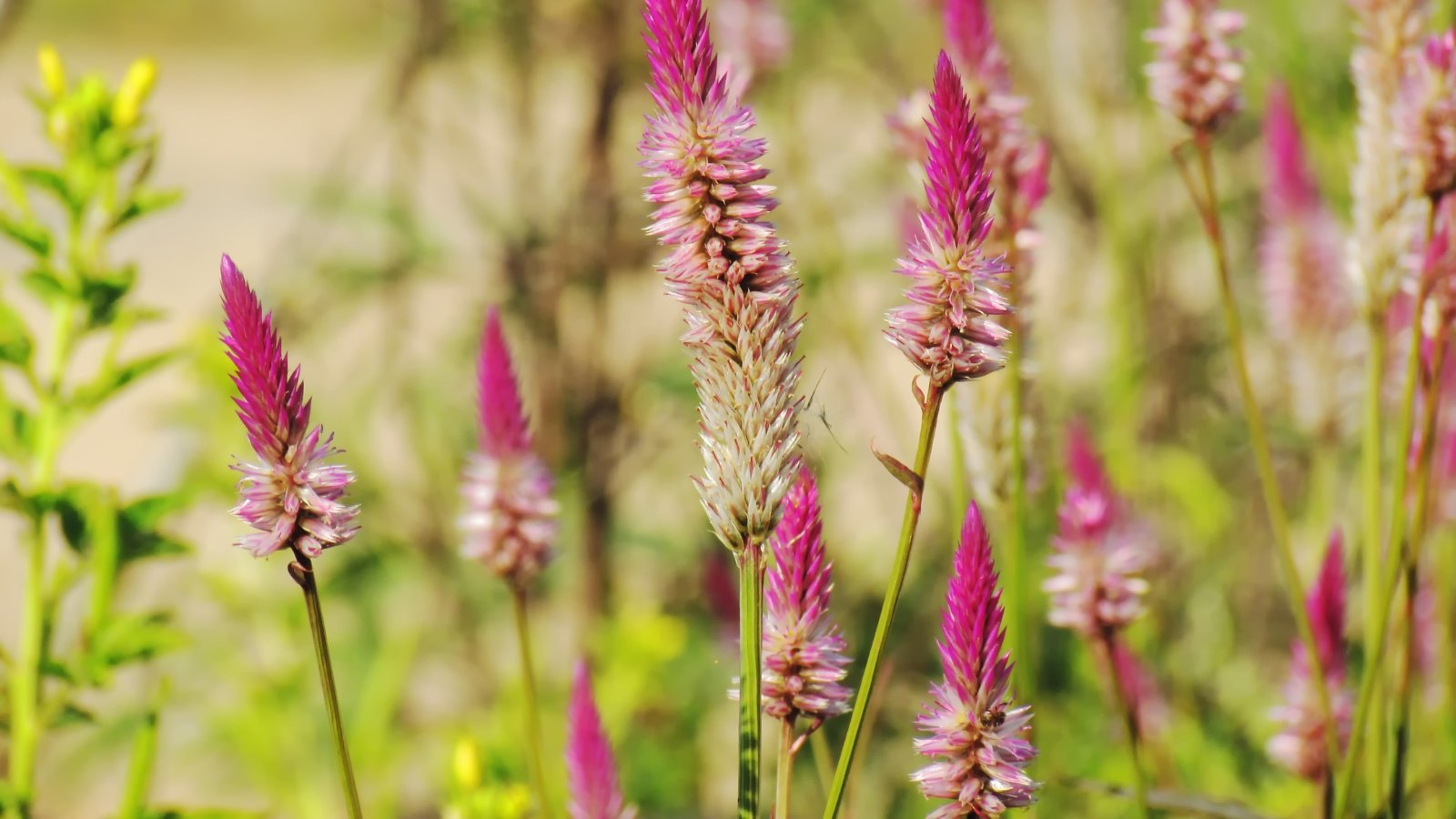 Warm soil in July brings out the best flower spikes.
Warm soil in July brings out the best flower spikes.Direct sowing of celosia is effective only in warm weather, so July is ideal for the task. They prefer fertile soil but avoid overusing nitrogen-rich amendments. The only complicated thing about these seeds is their size; they are tiny. They also need light to germinate, so barely cover them with soil or pressed into the surface.
‘Flamingo’ is a tall variety with soft pink flower spikes. Celosia flowers are soft and fuzzy. They’re excellent for the cutting garden and add lots of texture to the garden. They’re also great for dried arrangements as they retain most of their color after drying.
Mexican Sunflower ‘Torch’
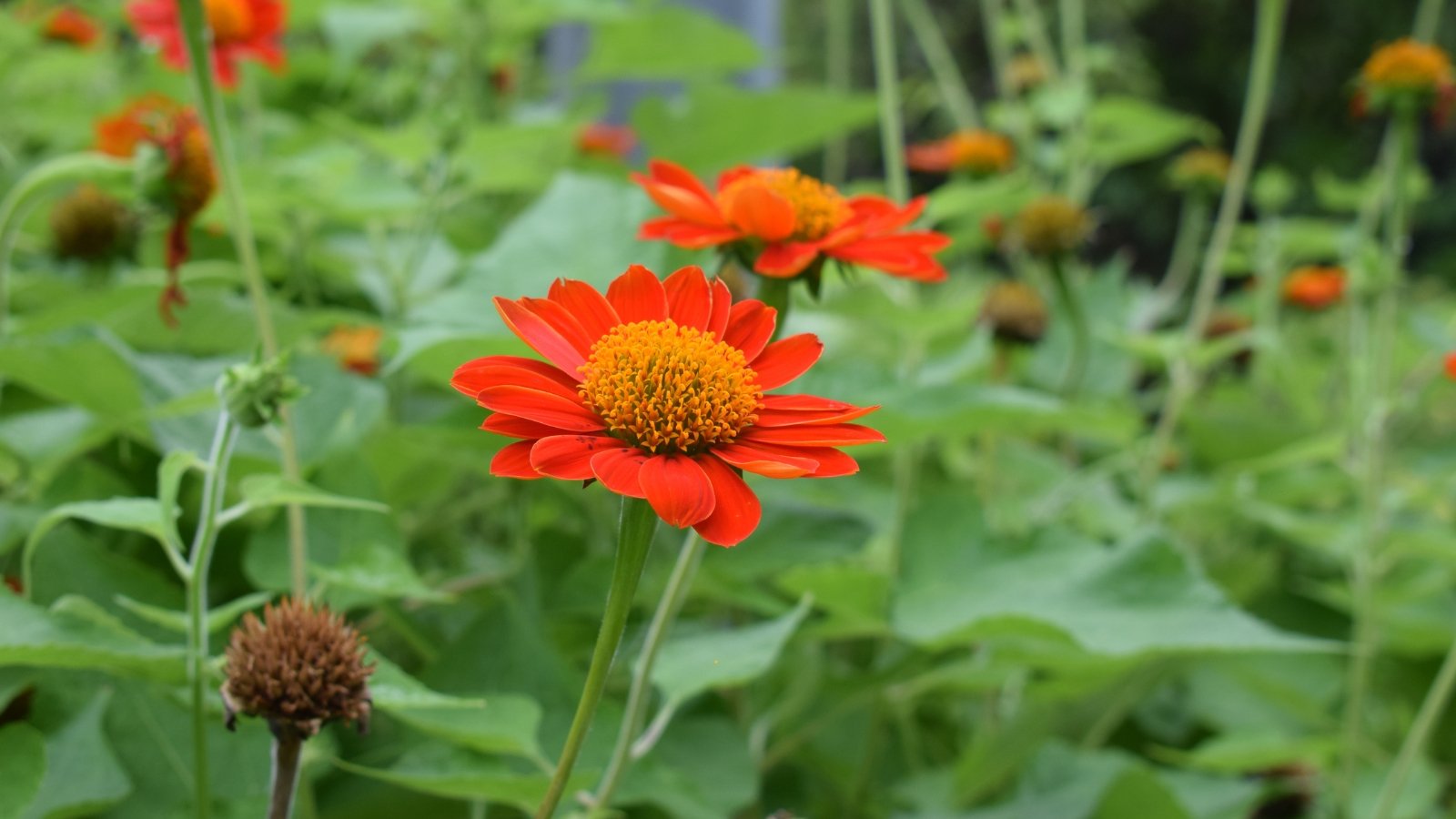 A long growing season rewards with vibrant, torch-like blossoms.
A long growing season rewards with vibrant, torch-like blossoms.Mexican sunflowers do best in warm climates with long growing seasons. This is especially true if you want to directly sow these flowers in July. You need 70-80 frost-free days to see blooms. Plant seeds 1/4″ deep and 12″ apart in well-draining soil.
‘Torch’ is a tall, heat-loving variety that works well in the back of the border. It also looks great in a meadow or prairie-style garden. It doesn’t mind poor soil and is a favorite with pollinators. Monarchs are attracted to the bright orange flowers.
Borage
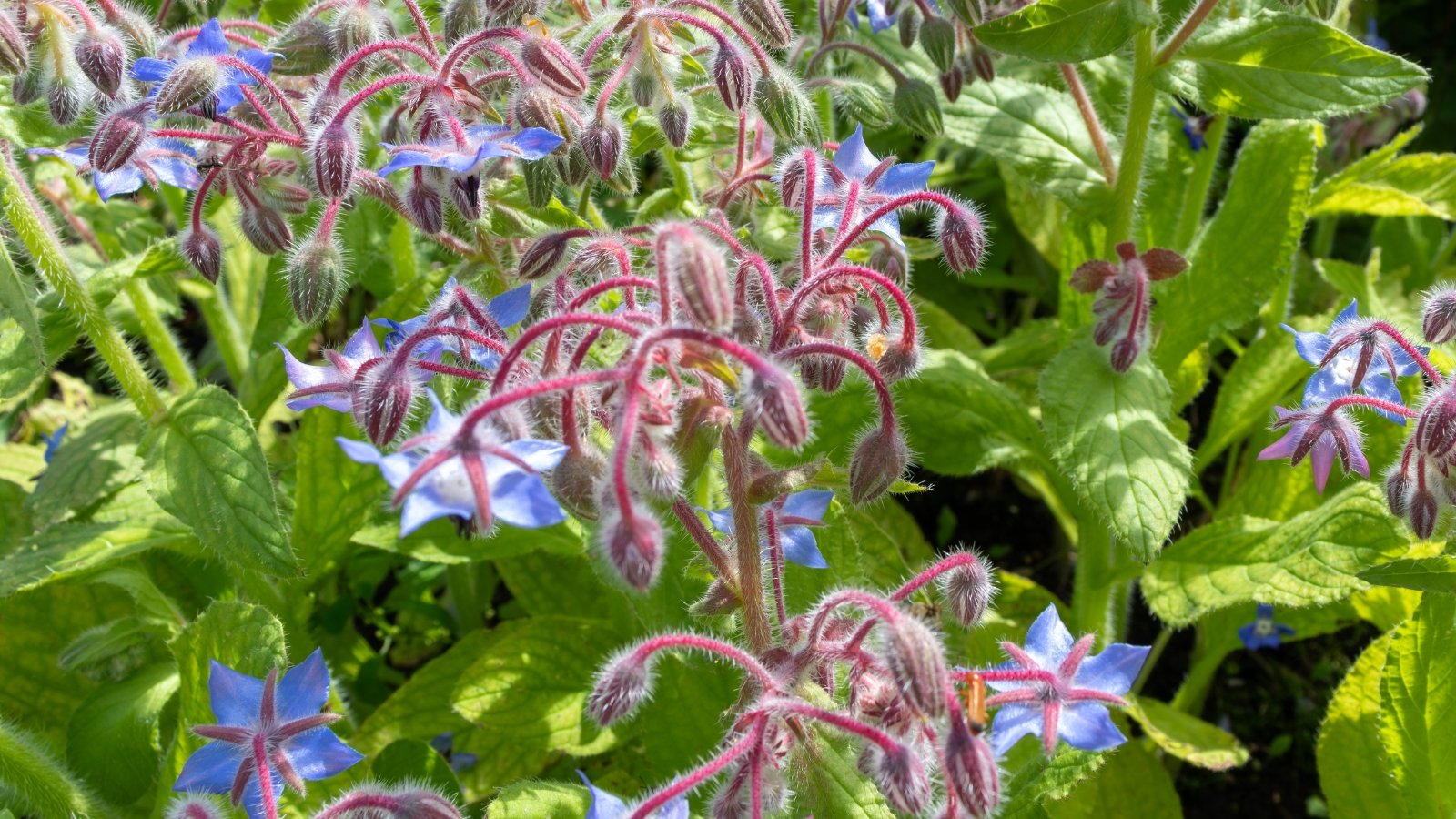 It’s a fast grower that brightens up warm-weather garden spots.
It’s a fast grower that brightens up warm-weather garden spots.Borage is a fast-growing plant that tolerates high temperatures. In mild climates with long seasons, you can certainly direct sow these flowers in July. You’ll need to keep the soil moist while the seeds germinate, but once established, this plant needs little care.
If you want to provide some late-summer nectar for pollinators, borage is an excellent choice. The blue flowers are attractive to bees. Planting this along with your fall vegetables will result in a substantially increased harvest. It self-seeds readily, so deadhead if you want to control the spread.

Blanket Flower
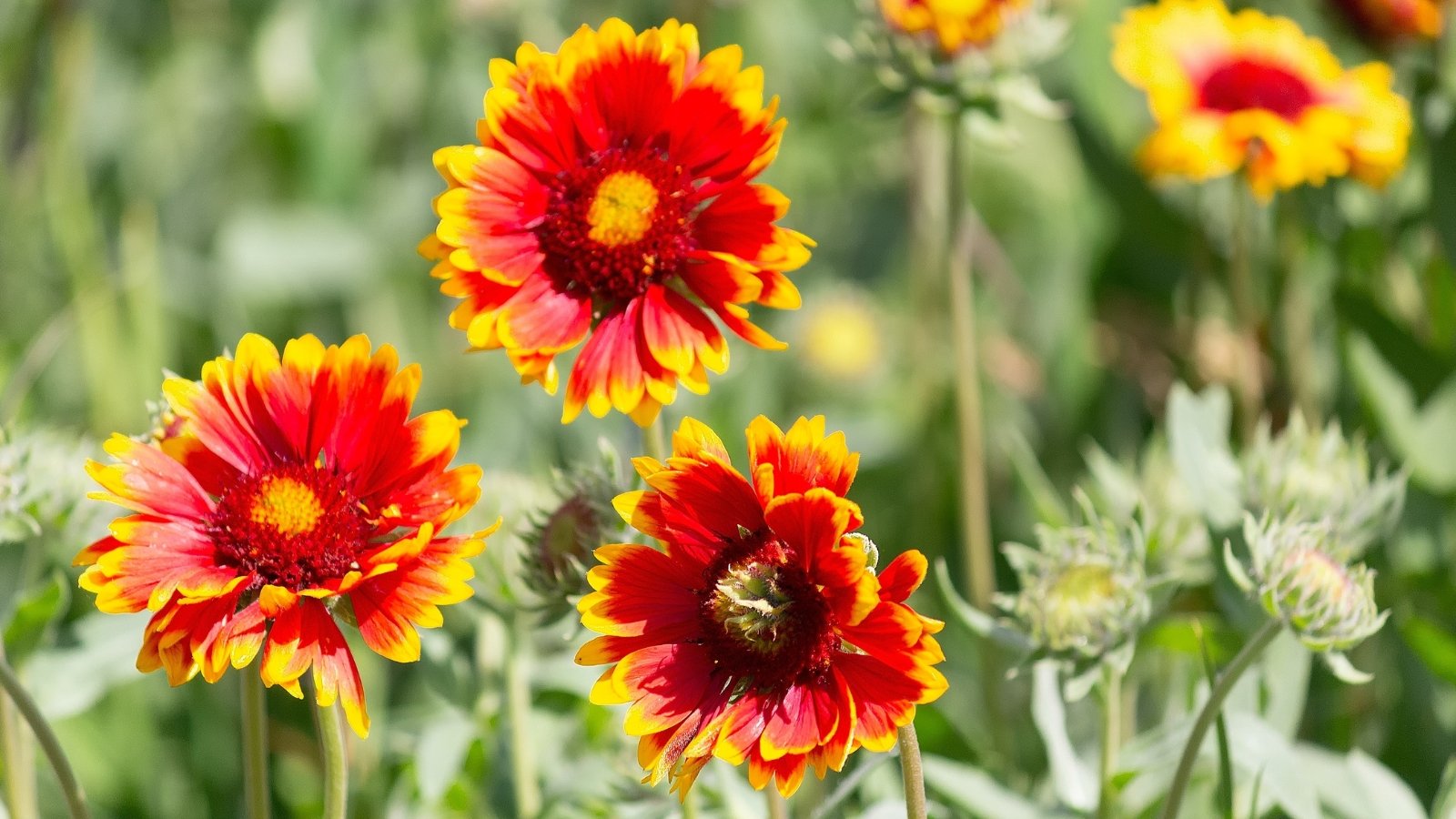 Warm climates might surprise you with bright fall flowers soon.
Warm climates might surprise you with bright fall flowers soon.Blanket flower is a perennial that tolerates a wide range of climates. While planting it in July won’t always bring flowers before winter, it will give you a head start for next year. Starting them now will result in strong, established plants with substantial roots by spring. In warm climates, you are more likely to see flowers in the fall.
Blanket flower seeds are small and need light to germinate. Lightly press into the soil, or surface sow them and keep the soil moist. They germinate in 7-14 days. Avoid overhead watering that could wash away seeds on the surface of the soil.
Love-In-A-Mist ‘Delft Blue’
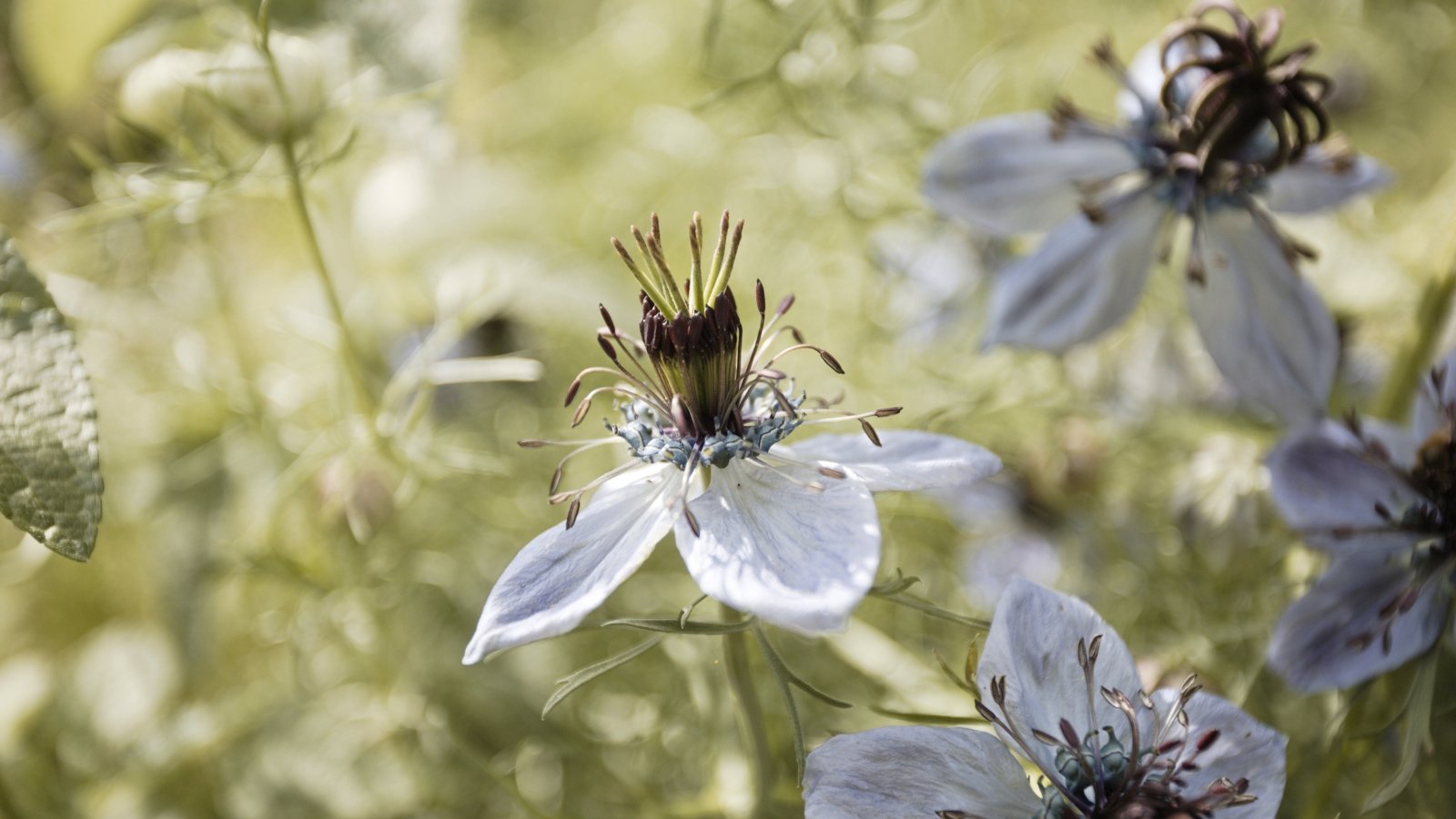 Their soft blues and whites shine best in cooler zones.
Their soft blues and whites shine best in cooler zones.Love-in-a-mist is the perfect plant to add a touch of cool color and airy texture to your flower beds. It’s best for July planting in cooler climates; however, in mild zones, you can sow in the fall for spring flowers. The seeds need light to germinate, so scatter them or lightly press them into the soil. Don’t cover them up.
‘Delft Blue’ is a charming variety named for the famous blue and white pottery of the 17th century. Splashes of blue-violet on delicate white flowers make this a unique cultivar. The foliage is feathery, making this a beautiful cut flower.
Bachelor’s Button ‘Black Magic’
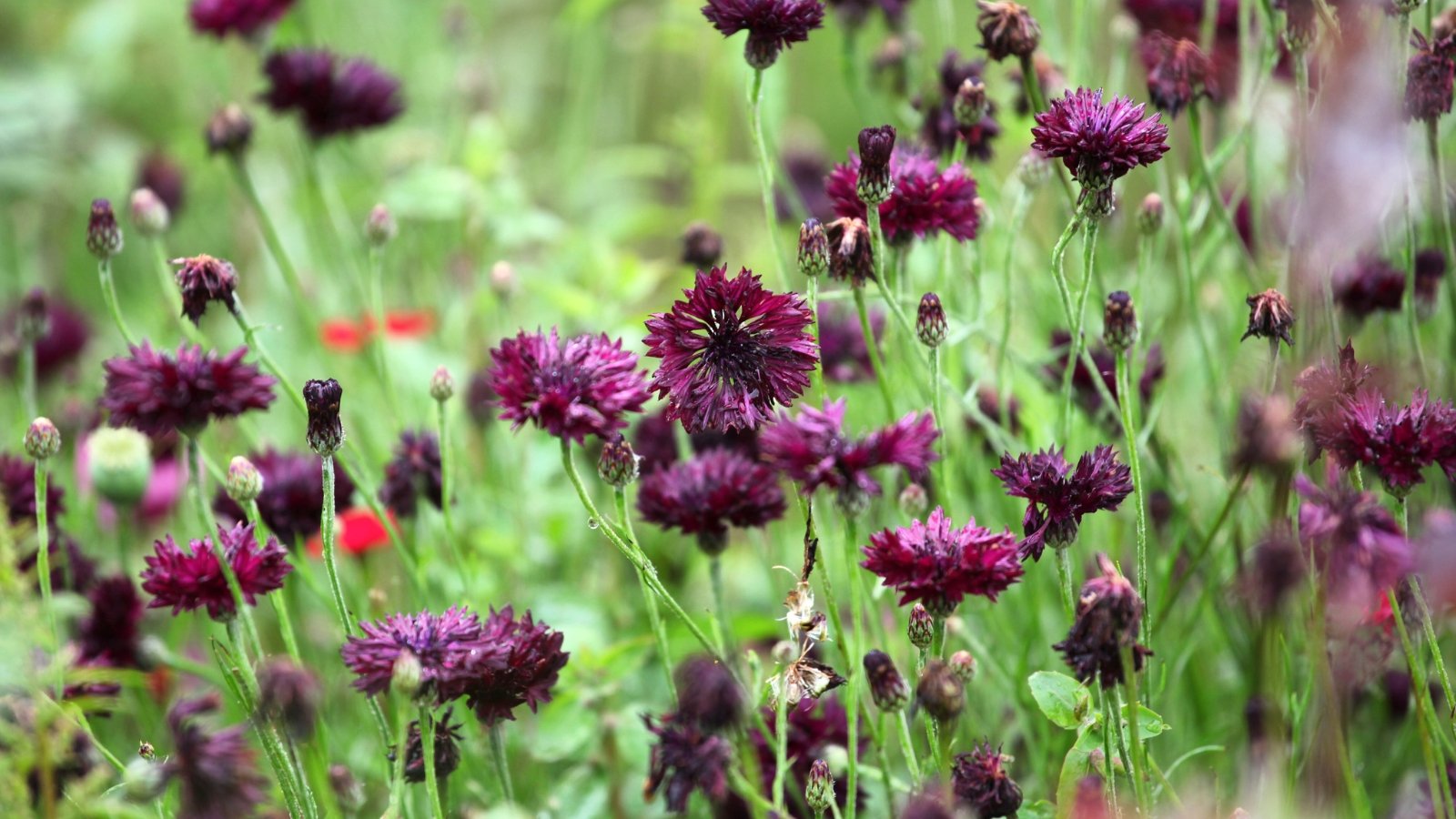 These deep maroon beauties tend to reappear uninvited.
These deep maroon beauties tend to reappear uninvited.It’s too hot in the South for July sowing bachelor’s buttons, but in cooler regions, it’s a good time. In zones 8-10, hold off until September. It takes 60-75 days for these to mature, so this is a good time in zones 5-7. Sow your seeds 1/4″ deep and 2″ apart. Thin them to 6″ apart after they sprout.
‘Black Magic’ is a stunning and dramatic cultivar that is perfect for Halloween. The blooms are deep maroon, nearly black, and edible! These self-sow readily, so expect them to return in the spring.
Sweet Alyssum ‘Oriental Nights’
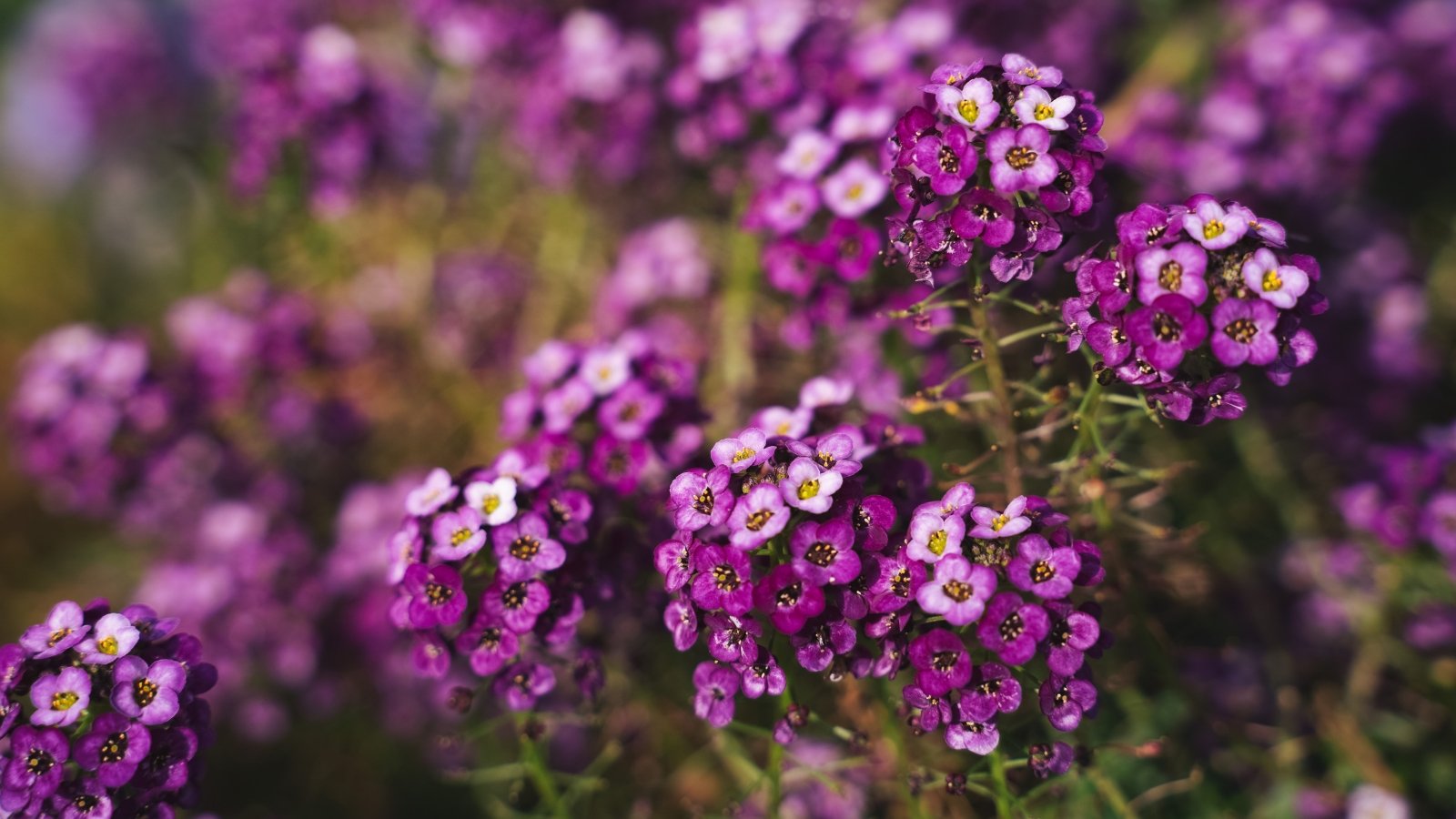 It’s a fast bloomer that doesn’t mind cooler nights.
It’s a fast bloomer that doesn’t mind cooler nights.Sweet alyssum is easy to grow, and in cooler regions, direct sowing in July is perfectly fine. It may be more difficult to germinate them in hot climates, but it’s worth a try. In shadier spots with adequate moisture, you should get better results. It’s a fast grower that begins to bloom in as few as 6 weeks.
‘Oriental Nights’ has lovely purple flowers and a sweet fragrance. It’s easy to grow and makes a stunning ground cover. It blooms continuously until frost, making this a wonderful addition to the late summer and fall garden that attracts ladybugs.


 1 week ago
11
1 week ago
11





















 English (US) ·
English (US) ·  French (CA) ·
French (CA) ·